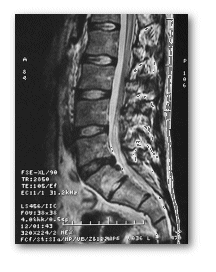Diagnosing Spine Problems

Introduction
Before your doctor can diagnose your condition and design a treatment plan, a complete history and physical exam are necessary. This will give your doctor a better idea of the cause of your condition. Then appropriate diagnostic tests may be recommended.
Complete History
Your doctor will want to get a history of your condition. This may begin by filling out a written form while you wait to see the doctor. Take time to think about everything that relates to your pain and write it down. The more information you share with your doctor, the easier your problem will be to diagnose. A physical history can give your doctor insight into when the pain began, anything that could have caused an injury, your lifestyle, physical factors that might be causing pain, and any family history of similar problems.
After reading through your written history, your physician will ask more questions that relate to the information you have given. Your doctor may want to know
- if you have had an injury
- where you are feeling pain and how intense it is
- if the pain radiates to other parts of your body
- if and where you are feeing numbness or weakness
- what factors make the pain feel better or worse
- whether you have had this problem or something like it before
- about any recent weight loss, fever, or illness
- if you've had problems with your bladder or bowels
Physical Exam
After taking your history, your physician will give you a physical exam. This allows the doctor to rule out possible causes of pain and try to determine the source of your problem. The areas of your body that will be examined depend upon where you are experiencing pain-neck, lower back, arms, legs, etc.
- Motion of Your Spine - Is there pain when you twist, bend, or move? If so, where? Have you lost some flexibility?
- Weakness -Your muscles will be tested for strength. You might be asked to try to push or lift your arm, hand, or leg when light resistance is put against them.
- Pain - The doctor may try to determine if you have tenderness of certain areas.
- Sensory Changes - Can you feel certain sensations in specific areas of the feet or hands?
- Reflex Changes - Your tendon reflexes might be tested, such as below the kneecap and behind the ankle in the Achilles tendon.
- Motor Skills - You might be asked to walk on your heels or toes.
- Special Signs - Your doctor will also check for any "red flags" that could indicate something other than spinal/vertebrae problems. Some signs of other problems include tenderness in certain areas, a fever, an abnormal pulse, chronic steroid use (leads to loss of bone mass), or rapid weight loss.
Diagnostic Tests
Diagnostic tests may be needed in order to diagnose your condition. Tests are chosen based on what your doctor suspects is causing the problem.
